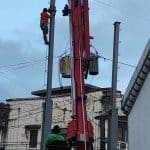
In this post, I will certainly discuss and also discuss the benefits as well as potential service chances of solar power Philippines industry. There has been a basic expansion in solar energy generation in Asia rather than Europe et cetera of the globe, and ASEAN nations, including the Philippines have a greater growth capacity. Existing power costs in the Philippines are the highest possible in Asia, consisting of Japan. This makes solar power a more affordable as well as financially a lot more advantageous option in the Philippines. The Philippines is a country of 102 million individuals, as well as is a reasonably fast growing Asian economy, and it is prepared for that 7000MW of power generation will certainly be added over the following 5 years.
An approximated 16 million individuals are off the grid with regards to current electrical power supply, and also this includes roughly 6000 institutions. This shows the possibility for supplying solar power Philippines industry. Citizens in off grid locations, are beginning to prepare the finance to purchase solar panels, batteries and so on. A buddy just recently discussed to me that his golf caddie, who resides in a local off grid town, near the golf links, had bought 2 solar panels with batteries, at a price of concerning P5000 (US$ 100), and this has provided her residence with power for lights, followers, a little fridge and a TV. The Philippine Federal government has actually also devoted to a 70% decrease in carbon discharges by 2030 and also has a 15.3 GW renewable energy target, thus urging a big rise in solar power as an energy source.
Given the present power market, solar power Philippines industry as an usual energy makes financial sense for the Philippines, as solar innovation as a newly formed power source, is well positioned to capitalize on boosting fuel rates, whilst also showing a high degree of strength to falling oil prices. Oil rates will need to fall listed below US$ 28 a barrel to create a noticable decrease in the sale of solar energy systems. In one of the most favorable circumstance, it is estimated that solar energy will displace regarding 16TWh [1] of gas and oil power generation in between 2020 and also 2025, climbing to perhaps 40TWh between 2026 and 2030. The existing expectation is that solar power expenses, on a worldwide basis, have been decreasing for the last 8 years. Installation expenses are anticipated to continue to reduce further, although at a slower rate. It is expected that solar energy Philippines industry expenses will certainly lower by 1.5 percent per annum until 2025, and afterwards decreasing by 0.75 percent per annum. The expense of future solar power tasks will even more decrease with much better administration of the various programs. Nonetheless, solar power expenses need to continue to be monitored, in order to offer the Philippine power market an option as well as viable power supply that can compete with the existing high power costs.
Solar Power Philippines industry Web Metering Laws
One more Philippine turning point in the development of solar energy making use of a Photo Voltaic (PV) system was in July 2013, when the web metering laws and also affiliation criteria were launched by the Philippine Power Regulatory Commission, as well as entered into impact on July 25, 2013. This was the very first mechanism recommended in the Philippine Renewable Resource Regulation that was at first come on 2008. This law now legalizes, as well as therefore opens the entire market of solar power Philippines industry roof-top panels listed below 100KW in locations that are on-grid in the Philippines
It is also understood that the internet metering market has the greatest possibility in the nation. This is in comparison to the Feed-in-Tariff (FiT) regimen which presently targets just 50MW; there is no target for the net metering market. Adhering to the release of these web metering rules, there has actually been a marked rise in activities in the industry, and it is expected that this advancement will just accelerate, as more consumers make the most of the regulations and mount roof-top photovoltaic panels.
The power utility companies in the Philippines, that are in charge of power circulation, have contributed in establishing the regulations and also standards to ensure security as well as security of the circulation grid. It is the obligation of these power business to ensure that the policies are adhered to, as well as to likewise ensure that all clients of good standing, currently have the chance to be interconnected to the grid, through roof-top solar panels.
These guidelines state that there is no subsidy included. The customer gets a credit based upon the KWh of electrical power exported after self-consumption, and also the average expense of generation to the Distribution Energy (DU) for the month. These rules will therefore form that the dimension of the roof-top photovoltaic panels, need to be in line with the maximum usage of the property or industrial customer, as the credit rating for exporting power to the DU is much less than the cost savings through self-consumption.
An additional integral part of the guidelines is the interconnection criteria. They describe carefully the technological aspects of linking a roof-top solar panel to a circulation grid. There has additionally been worldwide support, primarily from Germany with GIZ Gmbh, in the context of the renewables effort that has sustained the development of the interconnection standards with workshops, seminars and experienced suggestions. GIZ have actually created a record “Guidebook for Interconnection– a report for supporting the interconnection of rooftop PV systems in the Philippines”. This includes an analysis of the reduced and also average voltage distribution grids in the Philippines, the net metering rules, the affiliation requirements, and the sizing of solar panels for roof-tops.
The Future of Solar Energy in the Philippines
The Philippines has solid possibility in harnessing solar power, both for customer usage and power manufacturing, provided the continued drop in costs and also more advancement in the field. On top of that, the country is prepared to sign up with the solar power transformation, primarily because of its geographical area within both Tropical Areas. It is popular that the archipelagic geology of the Philippines presents one-of-a-kind obstacles in the distribution of solar energy energy, and it is acknowledged that the Philippines must be really able to adapt a solar power system for the country. Nevertheless, the Philippines needs to enhance the existing facilities, upkeep and linked modern technologies to guarantee that this will function.
It is additionally recognized that it will be necessary to develop the right energy management technology along with a solar power Philippines industry system that is constructed and developed in the Philippines, and has the possible to come to be a basis for other tropical island countries, should they want to adopt this solar energy system.
At the same time the economic sector ought to additionally look into creating renewable resource tasks, as well as programmers must take into consideration the opportunities as the Philippines integrates renewable resource advancement into its federal government policies.
One more important element for the future of this industry, and also the demand for future financial investments in the solar area, remains in the growth of battery energy storage which will incorporate renewable resource tasks right into the grid. It has actually been explained that the solar power Philippines industry must be innovative on producing a market for secondary solutions– i.e. battery power storage space. It is also recognized that there should be a step from most of lead based battery storage space systems, to the greater storage space and extra effective Lithium battery storage system.
A current Energy Regulatory Commission (ERC) Circular, has actually classified battery energy storage as a brand-new resource of secondary solutions or get power. Under the Circular, the ERC embraced the Grid Administration Board’s recommendations classifying the Battery Energy Storage System (BESS) as a brand-new resource of frequency control ancillary solutions, specifically backup book as well as second book.
Among the noticeable international financiers is AES Philippines, the local device people power titan AES Corp, and also the firm is presently developing the first 40MW battery storage center in Negros Occidental province. It is likewise offering its power storage batteries as a feasible long-lasting option to the power circumstance in the country.
Additionally, and also from a customer point of view, global rates of Solar Image Voltaic (PV) panels have actually already gone down 52% from 2008 to 2015. It is recognized that this reduction in prices for an energy resource, will certainly impact globally and also not just the Philippines.
Along with this trend, a research by the International Energy Company has shown that solar energy can surpass nonrenewable fuel sources, biomass, wind, hydro and also nuclear to become the largest resource of electrical power globally by 2050.
Rise in Investments in the Philippines.
The Philippine Government has likewise reported P366.7 billion (US$ 7.2 billion) of investments in 2015, of which 67% was from the solar power industry. This has actually led to an increase in work. The manufacture, construction and also installment has caused an approximated 100,000 new tasks.
Solar energy Philippines can provide higher power safety and security and a feasible economic option to the present electrical energy market along with the ability to supply quick different power, throughout serious climate problems, e.g. the yearly El Nino periods.
Adhering to the 2008 Renewable Energy Law (Republic Act No. 9513), the Philippine Division of Energy (DOE) has actually just recently boosted the national solar power yearly ability target to 500MW, under a modification set out in March 2015. The government has awarded 61 solar agreements, going for a total capability of 1.014 GW. Most solar tasks (approx. 700MW) will certainly be created in Luzon District, and the biggest of these is a 100MW solar PV project in Bataan, (along the shore, north of Manila). Additionally, the DOE has additionally received 2 proposals for Concentrated Solar Power (CSP) advancement, and also has actually shared the demand to set up ground dimension tools for CSP tasks. According to the Philippine authorities, project advancement was preserved for several essential solar tasks in an effort to satisfy the nationwide yearly target of 500MW by March 2015. This was achieved. Nevertheless, for more massive advancement of Solar Power Philippines industry, verified solar maps are needed, complied with by an identification of websites as well as islands of significant rate of interest. This is quite an on-going task.
Source: https://www.aseanbriefing.com/news/2017/06/27/solar-power-industry-philippines.html






